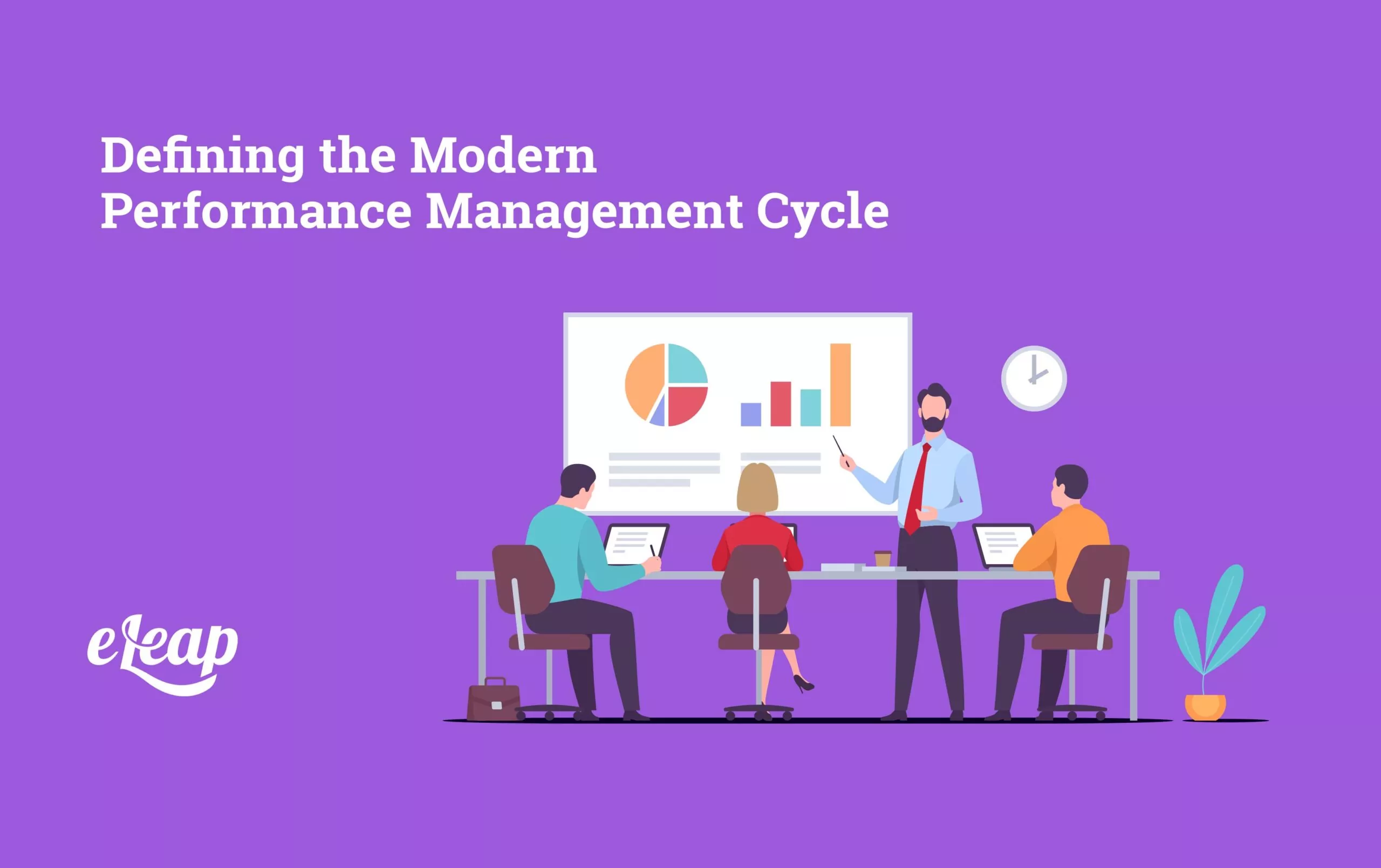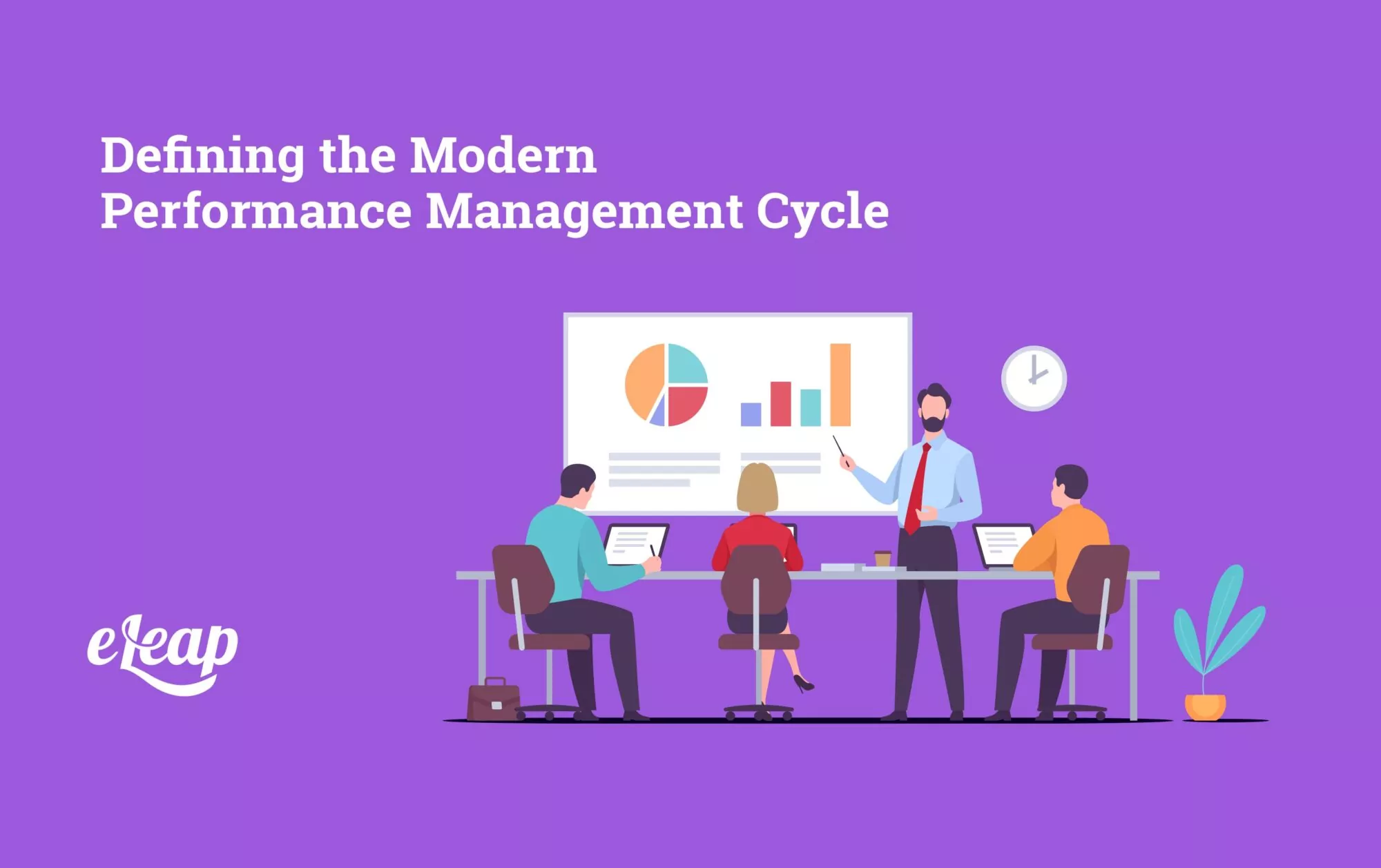Defining the Modern Performance Management Cycle

Performance management is the art of growing employees to their potential best selves. Of course, it doesn’t always look like that. That’s particularly true if you’re still following old-school, outmoded performance management steps, like annual performance reviews. Things have changed today, and the modern performance management cycle bears little resemblance to what has gone before. That’s a good thing for both employees and organizations. Unsure what the new cycle should look like? We’ll cover what you need to know below. Explore how eLeaP®’s Performance Management Platform can simplify evaluations, boost productivity, and drive measurable results.

Yesterday’s Cycle
Before we dive into the modern performance management cycle, it might be helpful to lay out the approach most of us used to take. It went something like this:
- Planning/goal setting
- Monitoring/tracking
- Reviewing and development
- Rating and rewarding
The final stage involved using an often arbitrary numerical measurement of an employee’s performance and then rewarding them based on that rating as it fell across the curve. However, most employees are not on a curve. They don’t fit neatly into little boxes that can be ticked off as you go.
Today’s Cycle
The modern performance management cycle resembles yesterday’s very little. Most organizations are adopting a more agile approach to this because of the shortcomings of the old way of doing things, plus the significant advantages that can be gained by doing things differently. These advantages include:
- The ability to course-correct immediately, not once or twice per year
- The ability to give nuanced feedback immediately
- The ability for employees to act on feedback right away
- The ability to develop employees to their fullest potential
- The ability to set flexible, achievable goals
- The ability to tailor rewards to individual employees
- The ability to recognize good performance more frequently
- The ability to foster better collaboration between team members
- The ability to improve communication between employees and leaders
- The ability for employees to give feedback to management
The key to today’s performance management cycle is timing and taking the right steps at the right intervals.
Goal Setting
Goal setting remains similar to what it was in the previous cycle. That is, goals should be related to the organization’s mission and need to achieve strategic milestones. However, the employee’s work needs to be integral here. The goal(s) set must be relevant to them to ensure they’re engaged. Be clear in terms of responsibilities, discuss those responsibilities in as much detail as necessary, and educate employees on the importance of their duties in terms of overall company performance.
Employee Development
Take the time to look at what makes each employee different. What are their needs when it comes to development? What are their innate talents? What skills or education does this employee have that another does not? How can you help that employee grow and evolve?
It’s important to note that the development stage is not a “once and done” sort of thing. It’s ongoing. Think of it as helping that employee plan and grow into a rewarding career with your company. It should involve not just mandatory corporate training but also help them earn certificates and even degrees that make them a more valuable asset for your firm but also a more capable professional and even a more confident person.
Ongoing Assessments
If there is one thing that sets today’s performance management cycle apart from yesterday’s, it’s the focus on ongoing assessments rather than reviews once or twice per year. Think of these assessments not as one-way lectures but as check-ins and conversations. It’s more a meeting of two people rather than a manager disciplining or rewarding an employee.
Assessments should occur no less than once per quarter. However, they can be much more frequent if need be. Have weekly sit-downs if necessary. The point is that the sooner you can provide feedback and guidance, the sooner an employee can put those directives into action and change their performance or address areas where improvement is needed.
Regular assessments provide a lot of benefits to both the organization and the employee. With timely feedback, employees work harder to make needed changes. They feel more engaged with the company as a whole. These sessions also provide them with a voice – they’re able to discuss how they can be effective within the organization, provide feedback to managers and leaders, and generally feel valued and listened to rather than ignored.
Recognition for Good Work
Employees who do good work should be recognized. If they do good work often, that should be recognized, as well. Regular, ongoing assessments give you the means to do just that. Rather than being praised once a year for doing a good job, employees are told regularly that they’re valued for what they do, which encourages them to do even better.
Of course, you should go beyond mere verbal acknowledgment of good work. Make sure that top performers see true rewards. It could be a raise, but it might also be something else of value, such as a rolling trophy that goes to the person who improved the most between assessments, for example.
Rinse and Repeat
The modern performance management cycle is agile and brief, but it is ongoing. Rinse and repeat the steps above. Set goals, discuss them, develop your team members, assess and discuss, then reward. Over time, you’ll build a stronger team made up of employees who can confidently make decisions, are consistent high performers, and who are both motivated and engaged.
In Conclusion
Performance management doesn’t need to be a punitive process designed to punish team members who are not living up to corporate expectations. It can be a tool to help you build a stronger team and, thereby, a stronger organization. However, doing so requires that you break out of your previous mindset. The old performance management paradigm is dead and gone. The new cycle embraces professional growth, regular check-ins, and creating an ongoing discussion with each employee that ultimately ensures they are engaged.